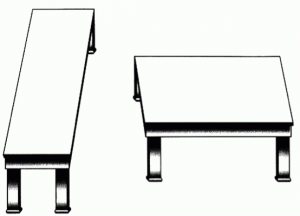International - Written by Barry & Richard on Sunday, May 10, 2015 13:40 - 0 Comments
I think therefore I am? – Basic Structure of the Decision Making Process: By Etai Biran
By Etai Biran:
In this week’s post I will try to explain how the human decision making process is structured. Most people lack an understanding as to how our minds work and how we come to make a decision. The fact that our brain does not come with a “user’s manual” and that we do not hold a basic understanding of how it works has profound consequences. Without this understanding, we are unable to expect when the cognitive processes that serve us every day so well are likely to misguide us.
Over the years, psychological research has revealed many of the shortcuts on which our brains rely on to help us get through the day. These systematic shortcuts that our brains take are common to all human beings – even the brightest ones. They can sometimes lead to small harmless problems (such as choosing the wrong outfit, buying the wrong TV etc.) but can sometimes lead to bigger and significant problems (such as choosing the wrong career, bad investment decisions etc.). Realizing these errors that occur in our brains can help us improve our judgment when it comes to making decisions.
The cognitive aspects that effect the decision making process are the ones that define our judgment. To help us improve our judgment, it is crucial for us to first identify the components that comprise a good decision making process. Experts on resolving decision making problems suggest eight steps that define a good decision making process:
- Define the right problem;
- Specify objectives;
- Create alternatives;
- Understand the consequences of each possible choice;
- Consider tradeoffs;
- Clarify uncertainties;
- Consider risk tolerance;
- Consider linked decisions.
These steps may provide a useful direction to define what a good decision making process might look like.
The question in hand however is, do people really follow these steps when they need to make a decision? Psychology research describes 2 systems of cognitive functioning. In the professional literature the two systems are referred to as “System 1” and “System 2” thinking. System 1 thinking refers to what we consider our intuitive thinking. This usually refers to fast, effortless, implicit, automatic and emotional decision-making. We make most of our decisions in life based on System 1 thinking. On the other hand, System 2 thinking refers to reasoning that is slower, effortful, explicit, conscious and logical. The eight steps described above demonstrate well behavior that is identified with System 2 thinking.
For most of our decisions in life, System 1 thinking is sufficient. Moreover, it would be inefficient to utilize System 2 thinking in every decision we make in life (such as what to wear in the morning). System 2 thinking should preferably influence our most important decisions, those that have great implications and consequences over our lives. However, people don’t always follow this pattern. The more people have on their plate, the more busy their lives are and the more they have on their minds causes them to rely more on System 1 thinking which is quicker and easier to execute (even when considering a significant decision). From a managers’ point of view, the frantic pace of the managerial life suggests that executives will often rely on System 1 thinking which might lead, among other things, to (non) compliance issues and complications. This is not to imply that managers should use System 2 thinking for every managerial decision they face, but rather to suggest that they must strive to identify those situations that require System 2 thinking. Once they identify those situations, decision makers can consider implementing the 8 steps mentioned above to try and improve their decision making process.
To challenge the System 1 intuitive thinking pattern (which most people seem to have a great deal of confidence in) consider the following diagram:
Which table is longer?
Most people intuitively think that the table on left is longer than the table on the right when in fact both tables are of equal length. This is an example of how our System 1 thinking sometimes fails us. Regardless to how smart people are, we all fall prey to these traps and errors that occur more often in System 1 than in System 2.
Understanding the basic elements of a good decision making process and acknowledging that we make decisions in different types of thinking patterns can help us improve our judgment. As a first step, we should try to identify situations in which we need to shift from intuitive System 1 thinking to logical System 2 thinking. Later, we need to be aware of the different kinds of traps our System 1 thinking sets up for us and learn how to avoid these traps (which may appear in System 2 as well). In behavioral economics these traps are referred to as heuristics and biases, which are both a result of human irrationality.
For suggested readings related to this post please contact me at: etbiran@gmail.com




